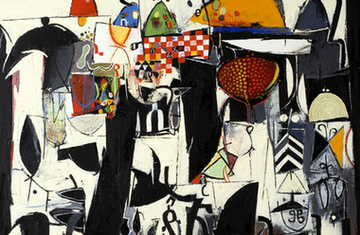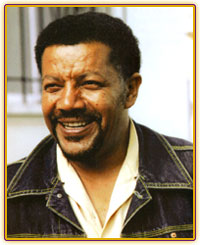A BRIEF NOTE ON THE ORIGIN OF THE AMARA AND OROMO By Fikre Tolossa I gave my word last night to Ato Zewge Fanta and Wondimu Mekonnen that I would provide briefly the genealogy of the Amara. This information is based on on my reading of Ethiopian history and Metsehafe Djan Shewa, (an ancient Ethiopian manuscript in Geez discovered by Meri Ras Aman Belay, in the ruins of an Ethiopian church in Nubia, a part of the Ethiopian Empire) which has been, translated into Amharic, abridged and published as Metsehafe Subae by the discoverer himself. According to this ancient manuscript, both the Amara and the Oromo are the descendants of one man or father- Melchizedek, King of Salem the highest priest of God on Earth, founder of Jerusalem to whom Abraham and other kings bowed and paid tithes to receive his blessings. About 2000 years before the birth of Jesus Christ, God ordered Melchizedek to send his son Ethel who was named as Ethiop later on by God, to go and settle in Ethiopia at the islands of Lake Tana, the source of the River Nile. God sent Ethel (meaning the gift of God) to Ethiopia, so that when God (Jesus Christ) is born as a human being 2000 years later, the descendants of Ethel would bring him to Bethlehem Ethiopian gifts such as yellow gold, myrrh and incense, led by a star which would appear in Ethiopia to lead them to Bethlehem. Accordingly Ethel went to Ethiopia and settled in what is today known as Gojjam. God changed his name from Ethel to "Ethiop" meaning "the gift of yellow gold to God". Thus, not only Ethel became Ethiop, but the land in which he settled also started to be called "Ethiopia". Lo and behold, 2000 years later, the descendants of Ethiop became 12 kings in the then Ethiopian Empire. They headed for Bethlehem with gifts led by the star which God had said would lead them. Now Ethiop begat 13 children- ten boys and three girls. The boys were: Atiba, Bior, Biora, Temna, Ater, Ashan, Azib, Berissa, Tesbi, Tola (by the way, the name of my uncle, the brother of my father Tolossa, was Tola.), and Azeb. The girls were, Loza, Milka and Suba. All of them became the fathers and mothers of many, many Ethiopian tribes. Out of the ten boys of Ethiop, I will take only the line of one of them- the line of Bior and show that the Amara and Oromo descend from him. Ethiop begat Bior, Bior begat Aram, Aram begat Nage who begat Hage, who begat Biora, who begat Belam (a prophet in the Sinai who prophesied the Birth of Jesus as a Star. He is in the Bible known as Baalam), Belam begat Keramid, who begat Shemshel (a female, great prophetess who was able to raise the dead). Shemshel begat Deshet. Her son Deshet too, became a major prophet who designed the Zodiac which was taken out of Ethiopia and did spread elsewhere in the world. Deshet, while meditating at the Bank of the River Nile about 15 hundred years before the birth of Jesus Christ saw in the foam of the River a vision of Mary, Jesus and the Star, that would lead his descendants to Bethlehem, and drew them on a tablet and passed the tablet to them. Now Deshet begat four sons who became the fathers of many Ethiopian tribes including the Amara and the Oromo. They are: Maji, Jimma, Mendi and Medebai. Maji begat Mara (Amara) and Jema or Jama (the people who settled at the River Jema in today's Shoa, a
river they named after their tribe. The Jamacans of Jamaica were captured by Ahmed Gragn when they fought him fiercely, taken from there, sold as slaves to Arabs who sold them to European slave traders, who sold them in Jamaica). Jimma begat Geneti, Arerti and Moren. Out of Medebay descended the Oromo. In fact, before the Oromo were called Oromo during the reign of Menelik I about 2950 years ago, they used to be called Medebay. There are some in Ethiopia who are still called Medebay retaining their original name. There is a reason why they started being called "Gala" and "Oromo" then, but I won't dwell on it now. Later on, the children of Mara began to be called "A-mara" or "Ha-mara". The words, "A" and "Ha" were used as indicators. Thus the Oromo and Amara share the same father and grand father. It is tragic and unfortunate that the Oromo and the Amara have been misled to fight each other in the past and in our time. Both the Oromo and Amara originated in Gojjam. The Oromo didn't come from Asia or Madagascar, as Aleka Taye and other ill-informed historians suggest. Later, each tribe split and spread all over the breath and length of Ethiopia and even the rest of Africa to seek out their fortune. In the mean time, they developed different languages and cultures. The Oromo became pastoralists. The Amara specialized in warfare and administration. For example, when Axumite was a little boy he was crowned as the Pharaoh of Egypt by the name of Ramzes. It was the Amara who accompanied him all the way from Ethiopia to Egypt about 2850 years ago to protect his throne. About 350,000 Amaras went with him to Egypt. Some of them returned to Ethiopia only after 1850 years of stay in Egypt, accompanying King Lalibela to Ethiopia after his return from exile in Jerusalem. They built together with the local Agew people, the Rock Hewen Churches of Lalibela. Later, when Axumite found the city of Axum and became Emperor of Ethiopia, he gave his daughter Ribla in marriage to King Nabukedenesor of Babylon (today's Iraq). It was the Amara soldiers again who accompanied Ribla to Iraq. She found a city after her name. The Amara found a city called "Amara" in Iraq after their own name. The city of "Amara" exists to this day in Iraq. It was captured by Shiite Moslems about a year ago. I have an American newspaper in my possession which printed the capture of the city of "Amara" by the Shiites. Pertaining to the Amara language, it had already begun to evolve as far back as 3000 years ago.In fact, it had existed long before Geez. Menelik the I declared Geez as the official language of Ethiopia about 2950 years ago to honor and empower the Agazi, a tribe he brought from Gaaza which fought for him when Ethiopian tribes warred against him treating him as a Jewish "keles" who had ambition over the Ethiopian throne. Indeed, it had developed and evolved more than 3000 years; i.e, a while before Geez was decreed by Menelik I as the official language of Ethiopia by imposition. For instance, there are kings and throne names that have Amara names such as Zerffe and Sendek-alma in the list of Ethiopian kings who reigned before Queen Sheba, mother of Menelik I; as well ancient towns in Egypt known as Amarna (konjo honin) and Delta (we are comfortable, we are doing fine), in the region in which Jesus, Joseph and Mary found refuge 2000 years ago. When Menelik I was born, the Amara wondered what King Solomon would say about his son, Menelik, and called him "Menelik" (min yilik, abateh?). If the Amara
language didn't exist over 3000 years ago, how come they called Menelik, "Minyilik" about 3000 years ago? I think this word alone suffices to prove that Amaregna and the Amara had existed in Ethiopia more than 3000 years ago. This is what I wanted to say for now. If I find time, I will detail all this in an article. I have gathered all the literature that I need to prove my point. I am Fikre Tolossa, descendant of Melchitsedek, King of Salem, of Ethiop and Deshet, the prophet, as, of course, all of you, my fellow Ethiopians, are. ⌂

